Strategic Plan Progress Report 2013
- Reports:
- Learning
- Discovery
- Engagement
- Integration
- Access
- Stewardship
President's Letter
Dear Colleague,
September marks the first anniversary of the adoption of Montana State University’s bold strategic plan, Mountains and Minds: Learners and Leaders. As we celebrate this anniversary, we take a few moments to reflect on the progress we have already made in achieving our goals.
In the words of our vision statement, MSU is “a welcoming, adventurous community of students, faculty and staff distinguished by its commitment to address the world’s greatest challenges.” This community devoted more than 18 months to develop the plan with participation across the university and our local and statewide constituents.
Montana State University’s Strategic Plan sets overarching goals for the university and relies on every member of the MSU community—students, faculty, staff, alumni, and our community partners—to contribute to its success.
The plan is intended to guide and inform those making strategic decisions, without constraining the tactics that will help MSU achieve its goals. Each University unit is empowered to envision its future, develop its own paths to these goals, and contribute to the University’s success in diverse and creative ways. Indeed, as you will see in these pages, there has been exciting action across the University to achieve the plan’s goals.
Celebrate our success with me as we look forward to a second year of progress.
Sincerely,
Waded Cruzado
![]()
President
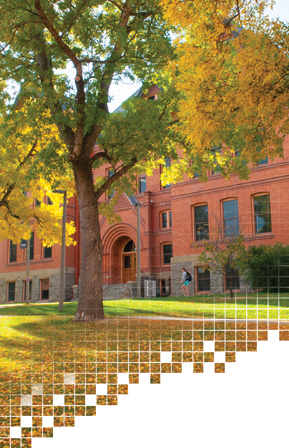
Learning Return to Top Progress Report 2013
MSU has always prepared graduates to meet the challenges of tomorrow. Successful, sought-after graduates are part of our legacy, and preparing students is central to our mission. MSU students learn in the classroom, lab, studio and field, through a hands-on, student-centered curriculum that integrates learning, discovery, and engagement in and out of the classroom.
Goal:MSU prepares students to graduate equipped for careers and further education.
Objective L.1:Assess, and improve where needed, student learning of critical knowledge and skills.
Objective L.2: Increase graduation rates at MSU.
Objective L.3:Increase job placement and further education rates.
Strategies
- Clarify, systematize and automate the process for assessment of learning outcomes
- Target success in key introductory level courses with supplemental instruction, flipped
classrooms, co-curricular study options, resource centers and
peer mentoring - Dramatically expand tutoring services
- Bring support centers to the students through expanded hours, added locations and renovated facilities
- Improve and add to advising and student success programs
Budget alignment(2012–13 investments unless otherwise noted)
- $3.1 million in new tenure-track faculty lines in 2011–12 and 2012–13
- $1.4 million for additional class sections to serve growing enrollment in 2011–12 and 2012–13
- $25 million gift to fund construction of new Jake Jabs College of Business and Entrepreneurship and develop new college programs
- $150,000 to support strategic investment proposals for math, statistics, and chemistry instructional redesign and enhancement
- $455,000 for Office of Student Success programs like Smarty Cats tutoring, financial literacy and career coaching
- $1 million in renovated classroom and collaboration spaces
- $7 million investment in new suite-style residence hall to enhance retention
- $11 million investment in residence and dining hall upgrades since 2011
Successes
- TEAL classroom successes—In support of its learning objectives, MSU conducted a pilot test of a technology-enhanced active learning, or TEAL, classroom in 2012-2013. The TEAL classroom in Gaines Hall enabled 240 undergraduate and graduate students from all eight of MSU’s colleges to collaborate on assignments during class hours in a high-tech space equipped with flat screens and data ports for laptop computers. A key feature of TEAL classrooms is the “flipped” structure of the course so students read or view lecture materials outside of class and actively solve problems in class. This innovative new teaching method and incorporation of technology has demonstrated significant improvement. In the case of Statistics 216, for example, the TEAL classroom resulted in a 68 percent decrease in students having to retake the course.
- Banner Year—Twenty-five MSU students won or earned honorable mentions for major scholarships and awards during the 2012-13 academic year.
- Success in Student Competitions—Student competitions are a way to validate MSU’s academic excellence compared to
other institutions across the country. In the past year MSU students excelled in a
broad spectrum of competitions across many disciplines.
- Animal science students won the Western Region Academic Quadrathlon and placed third in the national competition.
- Business students took third in the John Ruffatto Business Plan competition.
- Finance students won first at the region’s Chartered Financial Analysts Institute Research Challenge and advanced to the North American competition.
- Civil engineering students earned a first-place trophy at the estimating competition of Associated Schools of Construction.
- MSU engineering students recently won the Judges Innovation Award at NASA’s fourth annual Lunabotics Mining Competition at the Kennedy Space Center.
- Investing in Students—MSU has invested in a variety of support programs that help students succeed. Students have access to free peer-tutoring through the Smarty Cats program, and during the 2012-2013 academic year 15,000 hours of tutoring were provided. Writing assistance is available in a renovated and expanded Writing Center and at a satellite center located in the library. DegreeWorks, a recently launched online tool, enables students to map out their college path and stay on track to graduate, giving advisors time to focus on individual counseling.
- Best in Business: MSU’s Jake Jabs College of Business and Entrepreneurship has maintained its accreditation by the AACSB, an external agency that evaluates business programs worldwide. The AACSB accreditation is a distinction that is earned by less than five percent of the world’s business programs. After a thorough evaluation to ensure high quality, the reviewers commended MSU’s Professional Advantage program, particularly the Professional Coaching Clinic.
- New Health Care Career Options: Gallatin College MSU added a new certificate program in Health Information Coding. The program is designed to quickly prepare students to work in a variety of health care settings from hospitals and clinics to long-term care facilities or insurance companies.
- Top Tier Education: U.S. News & World Report ranked MSU in the top tier of the nation's best universities. Rankings are based on several key measures of quality, including academic reputation, peer assessment, graduation and retention rates, student/faculty ratios and average alumni giving, according to the publication.
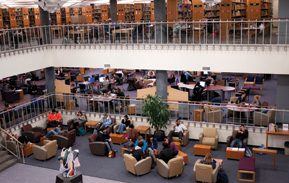
Library Commons, a recently renovated space for optimal study.
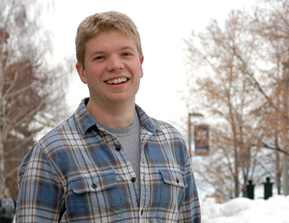
Bryan Vadheim, MSU's first Marshall Scholar
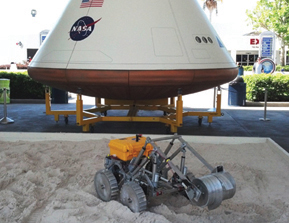
The student-designed lunar excavator at the NASA competition
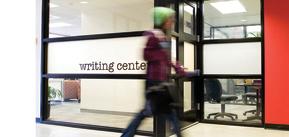
Renovated Writing Center, Wilson Hall
Discovery Return to Top Progress Report 2013
Innovative and significant research and creative activities are a recognized hallmark of MSU, where faculty, students and staff all participate in the creation of knowledge and art.
Goal:MSU will raise its national and international prominence in research, creativity, innovation and scholarly achievement, and thereby fortify the university’s standing as one of the nation’s leading public research universities.
Objective D.1:Elevate the research excellence and recognition of MSU faculty.
Objective D.2:Enhance infrastructure in support of research, discovery and
creative activities.
Objective D.3:Expand the scale, breadth and quality of doctoral education.
Strategies
- Improve support for faculty active in research and creative activity through enhanced
professional development, additional financial support and
facilities improvements - Increase the number of grant-active faculty through strengthened grant-writing support, expanded participation across disciplines, and opportunity hires
- Expand interdisciplinary efforts in research, creative activity and graduate education
- Increase capacity and strengthen recruiting for high quality graduate programs by improving the number and amount of graduate stipends, encouraging more faculty to advise doctoral students, and establishing timely pathways to degree completion
Budget alignment (2012–13 investments unless otherwise noted)
- $3.1 million in new tenure-track faculty lines since 2011 (also supports the Learning goal)
- $1.5 million in additional salary and research support to retain MSU’s
talented faculty - $6.3 million in new faculty startup packages
- $325,000 allocated for 2013-14 for 18 new competitively awarded graduate assistantships,
plus $170,000 awarded in strategic investment proposal process
for enhanced graduate recruiting and 11 additional graduate assistantships in specific programs - $80,000 for Native American graduate students in science and engineering
Successes
- Cooley Lab Renovation—MSU’s Cooley Laboratory, a hub for biomedical research, recently enjoyed a $14.9 million renovation that transformed the building into a state-of-the-art facility for research teams from the departments of microbiology, immunology and infectious diseases, and cell biology and neuroscience. Cooley is the first facility at MSU to earn a prestigious LEED Gold certification from the U.S. Green Building Council for energy-efficient design and construction.
- Faculty Excellence—In the past year, MSU faculty members have earned many prestigious awards and fellowships
in their respective fields. Four faculty fellows were named in their disciplines:
- Earth Sciences professor and director of the Montana Institute on Ecosystems Cathy Whitlock was named a Fellow of the American Association for the Advancement of Science (AAAS).
- Land Resources and Environmental Sciences research professor and director of the Montana Water Center Duncan Patten was named a Fellow of the Ecological Society of America (ESA).
- Marcy Barge, a professor in the Department of Mathematical Sciences, was named a Fellow of the American Mathematical Society (AMS).
- Mark Young, a professor in the Department of Plant Sciences and Plant Pathology, has been named a Fellow in the American Academy of Microbiology.
- Breakthrough Discoveries—MSU research has led to many significant discoveries. As a result, MSU holds more than 200 active technology licenses, nearly 90 issued patents and 14 plant variety certificates.
- Growing Graduate Education—In the past year MSU has made great strides in expanding its graduate and doctoral
education.
- The Board of Regents approved a Doctorate of Nursing Practice and the Professional Masters in Science and Engineering Management programs with the first cohort of students enrolling in fall 2013.
- The Montana Legislature increased the capacity of the WWAMI Medical Education Program by 50 percent and supported the creation of a Veterinary Medicine Program that will enable 10 Montana students to complete their first year of veterinary school at MSU.
- MSU renewed its focus on growing PhD programs in 2013 through strategic investments in graduate assistantships, improvements in tracking and advising graduate students through key checkpoints, and a Graduate Education Summit.
- Prestigious Award for Physicist: NicoYunes, an MSU physicist, won a five-year $500,000 Young Investigator CAREER Award from the National Science Foundation. The CAREER Award is the NSF’s most prestigious award that supports the early career development of teacher-scholars and honors outstanding scientists who haven’t yet received tenure.
- High Ranking in Chemistry: MSU’s Department of Chemistry and Biochemistry recently learned that the department is now ranked 28th in the nation, surpassing Yale, Princeton and other top U.S. schools in terms of federal support for chemical research and development according to “Chemical and Engineering News.” MSU has made significant gains, up from last year’s ranking of 42 and the achievement is particularly impressive considering that MSU’s department has 18 full-time tenure-track faculty members, compared to 40 for other schools near MSU in the rankings.
- Autoimmune Disorder Discovery: Scientists at MSU developed a therapeutic that has potential as a biological drug or probiotic food product to combat many of the more than 80 autoimmune disorders that affect some 23.5 million people in the United States. MSU has 213 licenses from technologies developed by faculty and researchers. Of those, 85 licenses are with Montana companies.
- Winning Wheat Variety: MSU researchers produced a new line of hard white winter wheat with potential to produce as well as one of the most popular red winter wheat varieties currently grown in Montana. MSU is the major supplier of new wheat varieties for Montana growers with approximately 2.5 million acres of MSU varieties grown in the state from 2010 to 2012, according to the Montana Agricultural Statistics Service.
- Guggenheim for History: Regents’ Professor Brett Walker, a historian who is a world-renowned expert in Japanese environmental history, has received a $48,000 Guggenheim Fellowship that will allow him to pursue a global project on asbestos. Walker was one of 175 scholars, artists and scientists across the nation to win a 2013 John Simon Guggenheim Fellowship; and one of only two fellows in the “History of Science, Technology and Economics” category.
- Physics Prize:Richard Canfield, a solar physicist at Montana State University, has won the 2013 Hale Prize from the Solar Physics Division of the American Astronomical Society. The award recognizes outstanding contributions over an extended period of time to the field of solar astronomy.
- Antarctic Ice Exploration: MSU researchers including faculty, staff and students who are part of a U.S. expedition in Antarctica have now reached and sampled a massive lake beneath the West Antarctic Ice Sheet. Polar ecologist John Priscu is one of the lead scientists of the project and hopes the samples may offer lessons about how life can survive without light and at temperatures near the freezing point of water.
- Genetic Finding: MSU entomologist Kevin Wanner led a team of scientist who recently made a discovery about the genetics involved with moth communication. The discovery, which was published in the Proceedings of the National Academy of Sciences, has significant implications for natural methods to control pests.
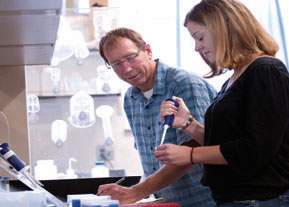
MSU's Department of Chemistry and Biochemistry is highly successful in grants and contracts.

Renovated Cooley Lab received LEED Gold certification.
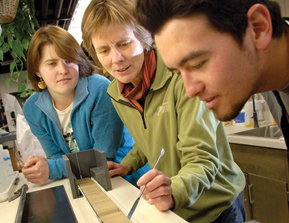
AAAS Fellow Cathy Whitlock works with students in the lab.

Agriculture professor Barry Jacobsen patented a disease-fighting technology.
Engagement Return to Top Progress Report 2013
Engagement is the collaboration between MSU and its local, state, national and global communities for the mutually beneficial exchange of knowledge and resources in a context of partnership and reciprocity (Carnegie Foundation, 2006). Engagement, a form of scholarship that bridges teaching, research and service, brings the university’s intellectual resources to bear on societal needs (Association of Public and Land Grant University’s Council on Engagement and Outreach, APLU CEO).
Goal: Members of the Montana State University community will be leaders, scholars and engaged citizens of their local, national and global communities, working together with community partners to exchange and apply knowledge and resources to improve the human prospect.
Objective E.1:Strategically increase service, outreach and engagement at MSU.
Objective E.2:MSU graduates will have global and multicultural understanding
and experiences.
Objective E.3:MSU students, faculty and staff will have increased opportunities for leadership development.
Strategies
- Build support structure to connect MSU students, staff and faculty with engagement information and opportunities
- Emphasize engagement and outreach in faculty hiring and development;
provide training and professional development opportunities for service learning
and engagement - Build on the success of and partner with MSU Extension, Museum of the Rockies and other externally-facing MSU programs
- Create platform for leadership development through Year of Engaged Leadership
Budget alignment (2012–13 investments unless otherwise noted)
- $250,000 in institutional support for MSU Extension and Montana Agricultural Experiment Station in 2012–13
- $300,000 in support of the Local Government Center
- $30,000 for the newly formed Outreach and Engagement Council
Successes
- Rural Leadership—MSU Extension developed the Real Montana program to build a network of informed and engaged leaders to advance the agriculture and natural resource industries in Montana. Starting in fall 2013, a 20-member class of individuals from a broad range of industries across Montana will participate in a two-year cycle of classes designed to heighten knowledge and enhance skills of emerging leaders.
- Student-Athlete ALL Challenge—MSU student athletes contributed 2700 hours of community service in 2012-13 while maintaining a team GPA of 3.15 or above for 13 consecutive semesters.
- Protecting and Preserving Fossils—A team from MSU and the local community of Ekalaka, Montana, have breathed new life into old fossils at the Carter County Museum. Carter County is home to the Hell Creek geologic formation, the site of some of the most prized fossils in the world. Led by Nate Carroll, a paleontology graduate student who is also the acting curator of the museum, MSU volunteers have brought energy and expertise to the museums paleontology, cultural and horticulture displays and collections. Carroll has led the effort to get the museum approved as a federal repository of dinosaur fossils.
- Engineers Without Borders—The MSU student chapter of Engineers Without Borders (EWB) works to design and build clean water systems in Kenyan villages. This allows more children to attend school rather than spending their day walking miles to retrieve clean water for their homes. EWB projects involve students from all disciplines including engineering, sociology, film and education.
- Educational Enhancement—Since 2011, almost 1,000 MSU education students have gained extra experience by tutoring and leading activities in after-school programs around Gallatin County. The “After School Partnership” enables students to provide service to the community and the opportunity to enhance and refine their skills.
- Grants for Graduate Nurses—MSU’s College of Nursing received the Advanced Education Nursing Traineeship grant from the U.S. Department of Health and Human Services’ Health Resources and Services Administration, which would provide applicants up to $9,000 per year. Nursing graduates provide primary or mental health care in a variety of settings in rural underserved areas.
- Improving Education—A collaborative program between MSU and Little Big Horn College has received a four-year grant from the U.S. Department of Education. The grant will enable the Indian Leadership Education and Development program, or I LEAD, to continue and expand the scope of its work. The program is designed to train American Indian educators and improve schools on and near Indian reservations in Montana and several neighboring states.
- Studying Cultural Science: A MSU research team won a $250,000 National Science Foundation grant to study how indigenous peoples’ native language use supports environmental science learning. The collaborative research project will focus on the Yellowstone region of the western United States and the Altai Republic of south-central Russia.
- Humanities Award Winners: Mary Murphy, a history professor, and Walter Fleming, a Native American studies professor, received Governor’s Humanities Awards in 2013. The Humanities Montana awards were established in 1995 to honor achievement in humanities scholarship and service and enhancement of public appreciation of the humanities.
- Training Montana Leaders: MSU’s Local Government Center partnered with the Montana Municipal Interlocal Authority to provide executive training to forty-four mayors and city managers. The MSU Local Government Center provides training, technical assistance and research services to elected, appointed and administrative officials and offers support to Montana's cities, towns and counties.
- Staff Leadership Development: Professional Council offered employees a unique professional development opportunity to participate in a leadership forum hosted by KoriVyse, a Human Resources Director at Nike, Inc. who travels the world training Nike Executives. The training featured a forum format with small group conversations focused on leadership identity, during which employees learned a way of thinking to align their aspirations to the institutional mission overall.

Nursing students provide basic health care and education in Honduras.
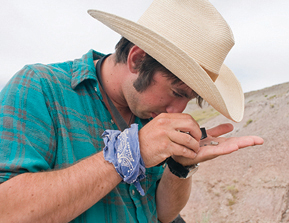
Graduate student Nate Carroll participates in a fossil dig.

Education students gain experience in area schools.
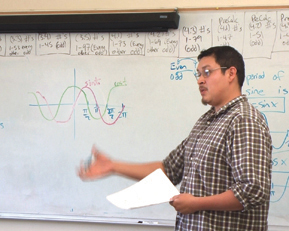
A student in the I LEAD program passes on new instructional methods to his peers.
Integration Return to Top Progress Report 2013
Integrating learning, discovery and engagement is the marquee feature of this MSU strategic plan. Traditionally, land-grant universities have educated students, conducted research and provided outreach to their communities and states. MSU has gone a step further by regularly integrating research and teaching, practicing service-learning, and combining research with outreach. With this plan, MSU now boldly defines the 21st century land-grant university as one where learning, discovery and engagement merge seamlessly to the benefit of students, faculty, staff and the wider community.
Goal: By integrating learning, discovery and engagement, and by working across disciplines, the MSU community will improve the world.
Objective I.1: Increase the integration of learning, discovery and engagement.
Objective I.2:Increase work across disciplines.
Strategies
- Align workload, promotion and tenure processes with strategic goals, including integration activities
- Strengthen support for student involvement in discovery and engagement through new and existing programs
- Highlight and build upon successes in interdisciplinary curriculum and research through interdisciplinary faculty hires, highlighted areas of research strengths, and new interdisciplinary academic programs
Budget alignment (2012–13 investments unless otherwise noted)
- $75,000 annually to support new faculty lines, beginning in 2013, in Sustainable Foods and Bioenergy Systems program
- $300,000 annually to support new faculty lines to begin in 2013 and 2014 addressing interdisciplinary field of Rural Health
- $100,000 annually to support new faculty line to begin in 2013 or 2014 in new interdisciplinary, multi-campus Materials Science program
- $147,000 College of Agriculture infrastructure investment in Horticulture Farm serving integrated teaching, research and outreach programs
Successes
- One-of-a-Kind—Based on the Carnegie Classification, MSU is one of only 108 colleges and universities in the nation (out of more than 4,600) that maintain “very high research activity.” Of those 108, only 51 are also classified by Carnegie as having significant commitment to community engagement. Of those 51, MSU is the only institution whose Carnegie enrollment profile is “very high undergraduate.” This means that MSU students have unique access to cutting-edge research and creative opportunities—and to an engaging educational experience that fully integrates learning, discovery and outreach.
- Celebrating Einstein—MSU hosted one of the world’s first events to celebrate the centennial of Einstein’s theory of General Relativity. MSU, NASA, the National Science Foundation and the Montana Space Grant Consortium held a free public celebration and an international scientific workshop in Bozeman. The workshop drew approximately 60 scientists from the United States, Europe and Japan who work on relativity and experimental tests of Einstein’s theories. The public celebration, titled “Celebrating Einstein,” expressed the concepts of general relativity, black holes and gravitational waves through creative expressions including art, music compositions, dance (including one from Cirque du Soleil), film, architecture, education and physics.
- Everest Education Expedition—The MSU Everest Education Expedition represented a seamless integration of learning, research and outreach. MSU geology professor Dave Lageson, graduate student Travis Corthouts, and a team of The North Face global athletes, led by Conrad Anker, a Bozeman resident, traveled to Mount Everest to study glacial ecology and other research areas. During the expedition, the team collected data and shared their adventure and scientific research with more than 1,000 students in classrooms across Montana. Suzi Taylor in Extended University received a national CASE Gold award for the accompanying curriculum.
- Towne’s Harvest Garden—Towne’s Harvest is a campus-based community supported agriculture garden that is run primarily by students. The garden is closely affiliated with the sustainable foods and bioenergy systems program and enables students to see the entire cycle from cultivation to consumption. Produce is sold to community members or donated to the local food bank.
- Community Design Center—Using photographs, drawings, maps and written descriptions students in MSU’s School of Architecture Community Design Center created a replica of the historic Fort Custer. The model is among several displays created by the students for the new Centennial Gallery of the Big Horn County Historical Museum and Visitors Center in Hardin, Montana, which opened during Hardin’s 100th anniversary celebration.
- International Paleontology Experience: Five MSU students traveled to China to finish fieldwork for an international collaboration focused on dinosaur eggs. Funded by a National Science Foundation International Research Experience for Students grant that was extended for a fourth year, the students spent a month in China examining approximately 200 eggs at the Zhejiang Museum of Natural History in Hangzhou, and visiting field localities that have yielded fossils over the past three field seasons.
- Course Opens Doors: MSU sophomore Shannon Collaer, a history and religious studies major who was a member of MSU's debate team that competed in the national Model Arab League last year, has been selected to travel to Saudi Arabia following the fall semester as a member of an U.S. Model Arab League delegation. Last summer, Collaer also attended an intensive Arabic language program in Tunisia by invitation from the U.S. State Department following the Model the Arab League competition.
- Peace Corps Participation: MSU ranked 16th in the Peace Corps’ 2013 ranking for volunteer participation among colleges and universities with enrollments between 5,000 and 15,000 undergraduates. There are currently 25 undergraduate alumni from MSU serving overseas.

Engineering students apply knowledge to design equipment that helps people with physical disabilities.
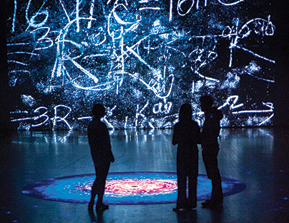
The Black (W)hole art installation at the Celebrating Einstein festival.
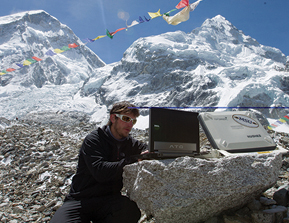
Student Travis Courtouts sends a dispatch to Montana students from Everest.
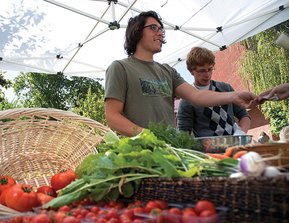
The Towne's Harvest produce stand on the MSU campus.
Access Return to Top Progress Report 2013
Land-grant universities were established by Congress in 1862 with the explicit intent to educate the sons and daughters of the industrial classes. MSU continues to fulfill that intent, believing that education serves society as a whole through job creation, stronger civic participation, and a reduction in the societal costs borne by a less educated populace. MSU does not turn away qualified Montanans and will continue to provide access to a quality education for all students to improve the state and the well-being of its citizens.
Goal: Montana State University is committed to widening access to higher education and ensuring equality of opportunity for all.
Objective A.1:Educate more students while maintaining the quality of programs.
Objective A.2:Diversify the student body.
Strategies
- Enhance financial aid offerings and limit cost increases so that MSU
remains affordable - Address growing student debt issues through financial literacy programs, advising, appropriate course loads and career coaching
- Expand course and program offerings, delivery times and instructional methods to meet the needs of a more diverse student audience
- Actively recruit from diverse student pools and support students with specific needs once enrolled at MSU, e.g. nontraditional aged students, veterans and American Indian students
Budget alignment (2012–13 investments unless otherwise noted)
- $135,000 in new Native American student recruitment, retention and success strategies funded through a competitive process through 2014
- $400,000 to support new and growing Gallatin College academic and
workforce programs - $500,000 over the last three years to support new online programs, online degree completion and Core at Night, to serve distant and working populations
- $1 million in institutional support of veteran students through the Yellow
Ribbon program - $1 million increase in institutional scholarships over the previous year
Successes
- Online Degree Completion—A variety of new online courses that can be taken individually or as part of MSU’s new online degree completion program were recently announced. The program, which offers a bachelor of arts degree in liberal studies, is designed for graduates of two year programs; anyone who has completed two years of college; military personnel and veterans; people who need a bachelor’s degree to advance on the job; and anyone interested in the broad-based education of a liberal studies degree.
- Women in STEM—MSU received a $3.4 million grant to enhance participation of women faculty members by improving the work environment for the entire campus. The five-year ADVANCE Institutional Transformation Grant from the National Science Foundation focuses on ways to broaden the participation of women in the STEM fields of science, technology, engineering and mathematics and social and behavioral sciences. Those are two areas where MSU women are outnumbered by men.
- American Indian recruitment, retention and success—MSU continues to enhance and build on successful Native American student-focused
programs with new scholarships and activities. Native American student enrollment
reached an all-time high in fall 2012, growing faster than the student population
as a whole.
- MSU has strengthened partnerships with Montana’s tribal colleges through programs like American Indian Research Opportunities, and student support programs like Engineering’s Designing Our Communities, Early Childhood Education Distance Partnership, and Nursing’s Caring for Our Own Program.
- MSU has secured external funding for the BRIDGES, McNair Scholars and Indian Leadership Education and Development Programs. In addition Native American graduate students will continue to be supported through the Sloan Indigenous Scholars program and the Washington Foundation.
- Veteran Friendly—MSU’s Veteran Center celebrated its first anniversary in 2012, coinciding with a 6 percent increase in veteran student enrollment and the first campus-wide celebration of Veterans Week, which culminated in a moving halftime ceremony at the Bobcat Football game. With vast experience as leaders and public servants, MSU student veterans actively contribute to engagement and leadership development at MSU as well increasing the visibility of nontraditional aged students. In recognition of the great work of MSU’s veteran center staff, MSU has been named a veteran-friendly school, and the Veterans Center director regularly serves on regional and statewide task forces.
- Enrollment Increases—MSU set a new enrollment record in fall 2012 with 14,660 students attending classes at the Bozeman campus. Subpopulations of students that increased include: undergraduate, freshman, Native American, veteran, out-of-state and Gallatin College. In addition, MSU attracted 126 of the 205 Montana University System Honors Scholarship recipients.
- American Indian Art Scholarship: MSU’s College of Arts and Architecture created a new scholarship for Native American students who want to study art, architecture, film, photography or music. The $2,500 scholarship is for incoming or transfer students who will attend full-time for the 2013-2014 year.
- Matching Funds: A new MSU program is available to help MSU and Gallatin College MSU students with limited income save money for college expenses. The Matched Education Savings Account program, or MESA, is designed to help students pay for college and increase financial literacy. For every dollar an MSU student in the MESA program saves, it will be matched with $3. For every dollar a Gallatin College MSU MESA student saves, it will be matched with $4.
- Great Value: MSU was the only college or university in Montana to make the list of “America’s 100 Best College Buys” in 2013. The national ranking takes into account average high school GPA, ACT and SAT scores and tuition prices to develop its list.
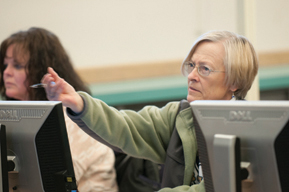
Gallatin College MSU helps individuals prepare for a career change or transition to college.
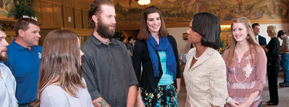
Condoleezza Rice speaks with MSU veteran students.
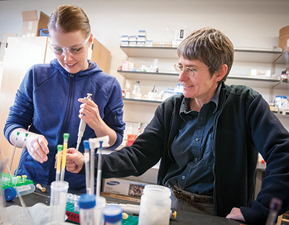
Chemistry professor Valerie Copie mentors a student.
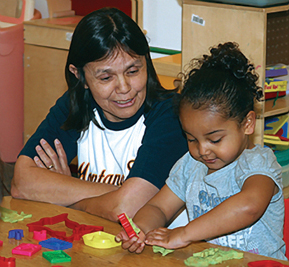
MSU's Early Childhood Education Distance Partnership Program helps tribal communities throughout Montana.
Stewardship Return to Top Progress Report 2013
As a public institution, MSU recognizes and honors its obligation to the many constituents who invest their time, financial resources, energy and support. MSU deeply values the public trust granted to it and is committed to continued good stewardship of its resources.
Goal: As steward of a land-grant institution, MSU will responsibly manage its human, physical, economic and environmental resources in an open and sustainable manner.
Objective S.1:Human Resources. Attract, develop and retain the best faculty and staff to achieve
the MSU mission.
Objective S.2:Physical Resources. Enhance aesthetic appeal and functional
quality of MSU physical resources to support high quality learning, research and
work environments.
Objective S.3:Economic Resources. Increase and effectively allocate resources in support of the
MSU Strategic Plan.
Objective S.4:Environmental Resources. Promote sustainable stewardship and a culture of resource
conservation at MSU.
Strategies
- Develop our human resources through improved salaries and training opportunities
- Improve administrative processes to make MSU more effective and enhance the work environment
- Invest in functional and aesthetic improvements to our physical infrastructure
- Invest in energy saving building upgrades
Budget alignment (2012–13 investments unless otherwise noted)
- $5 million in employee raises outside the state pay plan with approval from the Board of Regents Regents in 2011-12 and 2012-13
- $300,000 in additional merit and market increases for faculty
- $1.5 million in additional salary and research support committed to retain high achieving faculty (also supports the Discovery goal)
- $100,000 investment in professional development
- $335,000 investments in OpenMSU to improve administrative support processes
- $2 million investments in technological, functional and aesthetic upgrades to classrooms, collaboration spaces
- $100,000 in support of the Office of Sustainability
- $8.6 million investment in efficiency program to reduce energy, water and operations waste
Successes
- Jabs Hall—MSU broke ground on the new Jabs Hall, future home of the Jake Jabs College of Business and Entrepreneurship. The new building, made possible by a generous $25 million gift from MSU alumnus Jake Jabs, will feature an emphasis on sustainability, flexible classroom and workspace, and natural light, addressing stewardship of our physical spaces as well as the environment.
- Top Environmental Program—MSU’s Sustainable Food and Bioenergy Systems program has been named one of the 10 best college environmental programs in the United States by Mother Nature Network. Mother Nature Network, or MNN, recognized the colleges and universities for incorporating sustainability into the curriculum. MNN is an online network that promotes environmental and social responsibility. Other universities with programs in the top 10 include Cornell University, Duke University, Arizona State University and Yale University.
- OpenMSU—During the 2012–13 academic year, OpenMSU, a comprehensive effort to make work at MSU more effective and more satisfying, moved from data gathering and recommendations to implementation on several projects like electronic document management and workflow, improved personnel recruitment processes, and streamlined purchasing.
- Tree Campus USA designation—The Arbor Day Foundation has named Montana State University a 2012 Tree Campus USA in honor of its commitment to effective campus forest management and for engaging staff and students in conservation goals. MSU achieved the designation by meeting Tree Campus USA’s five standards, which include maintaining a tree advisory committee, a campus tree-care plan, dedicated annual expenditures toward trees, an Arbor Day observance and student service-learning projects.
- Promoting Pollution Prevention—In 2013, 22 organizations received Ecostar Pollution Prevention awards, which are coordinated by MSU Extension’s Housing and Environmental Health Program and funded in part by the EPA. The 22 EcoStar award winners represent 17 communities from across the state. The Ecostar award program recognizes small businesses, institutions and nonprofits that are leading efforts in Montana to voluntarily focus on pollution prevention and create a more environmentally sustainable model for business and education.
- Sustainable 16—MSU is one of 16 universities and colleges selected for the “Sustainable 16” in the second annual Environmental March Madness Tournament. Contest organizers at Enviance, the GreenBiz Group and Qualtrics selected institutions that demonstrated excellence in environmental degree programs and curriculum, environmental opportunities for students and campus sustainability efforts.

Sustainability is a priority on the MSU campus.
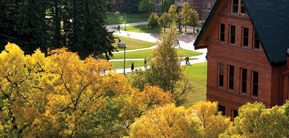
MSU is a Tree Campus USA.

Construction is underway with Jabs Hall scheduled to open in fall 2015.

Students in Sustainable Foods study all aspects from crops to consumption.
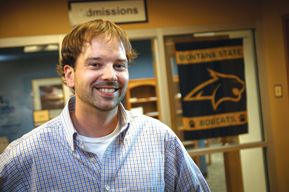
OpenMSU helps create a more satisfying work environment.
Selected Plan Metrics Return to Top Progress Report 2013
|
Learning |
2009-10 |
2010-11 |
2011-12 |
2012-13 |
||
|
Objective L.2: Increase graduation rates at MSU. |
||||||
|
L.2.1 |
Bachelor Graduation Rate |
48% |
47% |
51% |
49% |
|
|
L.2.3 |
Workforce Certificates and Associate Degrees Awarded (Summer, Fall, Spring)* |
22 |
51 |
66 |
||
|
L.2.4 |
FTFTF Retention Rate (entering cohort from prior Fall) |
72% |
74% |
74% |
74% |
|
|
Objective L.3: Increase job placement and further education rates. |
||||||
|
L.3.1 |
Employed in Major Field or Position of Choice |
57% |
66% |
63% |
64% |
|
|
L.3.2 |
Graduate School Enrollment (one year post-grad) |
20% |
25% |
22% |
18% |
|
|
Discovery |
2009-10 |
2010-11 |
2011-12 |
2012-13 |
||
|
Objective D.3: Expand the scale, breadth and quality of doctoral education. |
||||||
|
D.3.2 |
Graduate student headcount |
1,924 |
1,980 |
1,965 |
1,888 |
|
|
D.3.2 |
Doctoral student headcount |
401 |
396 |
397 |
420 |
|
|
D.3.3 |
Graduate Degrees Awarded (Summer, Fall, Spring) |
519 |
548 |
591 |
557 |
|
|
D.3.3 |
Doctoral Degrees Awarded (Summer, Fall, Spring) |
45 |
56 |
53 |
49 |
|
|
Access |
2009-10 |
2010-11 |
2011-12 |
2012-13 |
||
|
Objective A.1: Educate more students while maintaining the quality of programs. |
||||||
|
A.1.1 |
Montana Undergrad Headcount Enrollment (Fall) |
7,893 |
8,240 |
8,586 |
8,680 |
|
|
A.1.2 |
New Transfer Students (Summer and Fall) |
801 |
913 |
973 |
988 |
|
|
A.1.5 |
Gallatin College Headcount Enrollment (Fall) |
100 |
199 |
228 |
||
|
A.1.6 |
Percent Financial Need Met (prior AY) |
72% |
74% |
74% |
72% |
|
|
A.1.7 |
Total Headcount Enrollment (Fall) |
12,764 |
13,559 |
14,153 |
14,660 |
|
|
Objective A.2: Diversify the student body. |
||||||
|
A.2.1 |
Native American Student Headcount Enrollment (Fall)‡ |
500 |
545 |
580 |
||
|
A.2.2 |
Other Under-Represented Ethnicity and Race Headcount Enrollment (Fall)‡ |
904 |
947 |
1,065 |
||
|
A.2.3 |
International Student Headcount Enrollment (Fall) |
460 |
516 |
553 |
599 |
|
|
A.2.4 |
Nontraditional Age Student Headcount Enrollment (Fall) |
2,247 |
2,447 |
2,655 |
2,781 |
|
|
Stewardship |
2009-10 |
2010-11 |
2011-12 |
2012-13 |
||
|
Objective S.2: Physical Resources. Enhance aesthetic appeal and functional quality of MSU physical resources to support high quality learning, research and work environments. |
||||||
|
S.2.1 |
Percent of classrooms with technology rated tier 3 or above (Recorded periodically)†† |
- |
- |
2% |
6% |
|
|
S.2.1 |
Percent of classrooms with technology rated tier 2 (Recorded periodically)†† |
- |
- |
58% |
62% |
|
|
Objective S.4: Environmental Resources. Promote sustainable stewardship and a culture of resource conservation at MSU. |
||||||
|
S.4.1 |
Greenhouse Gas Emissions (Montana) |
68,159 |
66,566 |
64,412 |
64,909 |
|
|
S.4.2 |
Diverted waste from landfill |
6.0% |
7.2% |
9.5% |
9.2% |
|
††Expanded list of included instructional spaces in 2012-13
MSU by the Numbers Return to Top Progress Report 2013
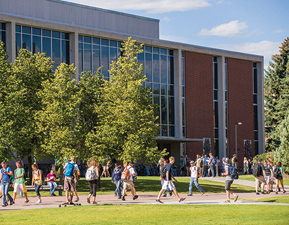
Student enrollment continues to grow.
Enrollment
|
Fall 2012 Undergraduate Headcount Enrollment |
12,772 |
|
Fall 2012 Graduate Headcount Enrollment |
1,888 |
Faculty
|
Fall 2012 Full-time Faculty |
580 |
|
Fall 2012 Part-time Faculty |
337 |
|
Student to Faculty Ratio |
17:1 |
Degrees
|
2012-13 Certificates and Associate Degrees Awarded |
66 |
|
2012-13 Bachelors Degrees Awarded |
1,881 |
|
2012-13 Master Degrees Awarded |
508 |
|
2012-13 Doctoral Degrees Awarded |
49 |
Fall 2012 Enrollment by College
|
Undergrad |
Graduate |
Total |
|
|
Agriculture |
859 |
148 |
1,007 |
|
Arts & Architecture |
1,235 |
113 |
1,348 |
|
Business |
1,151 |
46 |
1,197 |
|
Education & HHD |
1,437 |
365 |
1,802 |
|
Engineering |
2,581 |
187 |
2,768 |
|
Graduate School |
0 |
280 |
280 |
|
Letters & Science |
3,066 |
483 |
3,549 |
|
Nursing |
884 |
83 |
967 |
|
Gallatin College |
228 |
0 |
228 |
|
University College |
1,331 |
0 |
1,331 |
|
Other |
0 |
183 |
183 |
|
Total |
12,772 |
1,888 |
14,660 |
Fall 2012 Enrollment by Gender
|
Female |
6837 |
|
Male |
7823 |
Fall 2012 Enrollment by Race and Ethnicity (individuals may be counted more than once if self-identified with more than one race or ethnicity)
|
American Indian/Alaska Native |
580 |
|
Asian |
270 |
|
Black/African American |
172 |
|
Hispanic |
431 |
|
Native Hawaiian/Pacific Islander |
61 |
|
White |
13,146 |
|
International |
599 |
|
Unknown/Other |
191 |
Fall 2012 Undergraduate Enrollment by Age
|
Under 24 years old |
9991 |
|
24 years old and older |
2781 |
First-Time Full-Time Freshmen
|
High School GPA |
3.41 |
|
ACT Comprehensive Score |
25.2 |
|
SAT Score |
1707 |
Employees
|
Fall 2012 Full-time Employees, including Faculty |
2334 |
|
Fall 2012 Part-time Employees, including Faculty |
720 |
